With the increasing cost of electricity, solar cooling systems could be a more viable option, despite initial challenges, argues Muhammad Ali.
With the increasing cost of electricity, solar cooling systems could be a more viable option, despite initial challenges, argues Muhammad Ali.
The sun is a continuous fusion reactor in which hydrogen is turned into helium. The total energy output from the sun is 3.8 x 1020 MW, which is equal to 63 MW/m2 of the sun’s surface.
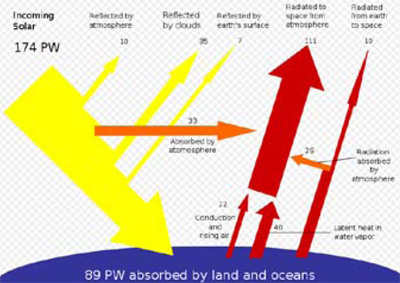 The Earth receives only a tiny fraction of this emitted energy, which is equal to 1.74 x 1011 MW (or 341 W/ m2 average). However, it is estimated that 84 minutes of solar radiation reaching the Earth can satisfy the world energy demand for one year (about 900 EJoules).
The Earth receives only a tiny fraction of this emitted energy, which is equal to 1.74 x 1011 MW (or 341 W/ m2 average). However, it is estimated that 84 minutes of solar radiation reaching the Earth can satisfy the world energy demand for one year (about 900 EJoules).
The amount of solar energy available at any specified place depends upon three factors:
Solar radiation data for different locations:
Since availability of solar energy depends upon location, it is evident that solar radiation is different in different parts of the world. The Earth’s atmosphere is surrounded by different gases, particles and suspended solids. A large amount of solar radiation enters into the atmosphere and is either reflected back, scattered or absorbed into the atmosphere.
Some amount of this radiation reaches the Earth and is called diffused radiation. Whereas, the portion of radiation that reaches directly (without scattering) to the Earth is called direct or beam radiation. The location at the belt of maximum solar radiation, that is, the, Equator, receives maximum solar energy.
Solar energy can be converted into chemical, electrical, and thermal processes. Solar energy is converted into electricity through photovoltaic conversion (sun to electricity). Solar thermal conversion in the form of hot water, steam or other heat transfer fluids can be used for space heating and cooling, domestic water heating, power generation, distillation and processes heating.
The major components of a solar thermal air conditioning system are the solar collectors. They are heat exchangers that absorb solar radiation energy, convert it into heat and transfer the heat to heat transfer fluids (air, water or oil).
The thermal energy, thus collected, can either be used directly for air conditioning or can be stored in thermal energy storage tanks for later use – at night when sunlight is not available.
There are two types of solar collectors: stationary or non-concentrating collectors and concentrating collectors.
A non-concentrating collector has the same intercepting and absorbing area, while the concentrating collector is typically a sun-tracker that uses concave reflecting surfaces to concentrate solar beams on to a small receiving area and increase the radiation flux to many times. This produces heat transfer fluids of high temperatures. (See table 2 at end of this story)
Solar absorption air conditioning – system description:
The difference between solar absorption air conditioning and traditional fossil fuel-fired unit is that in solar absorption air conditioning systems, the energy supplied to the generator comes from solar-collector units. The heat from the sun can be used directly in the absorption machine or it can be first stored in a thermal storage tank and then used in the absorption machine.
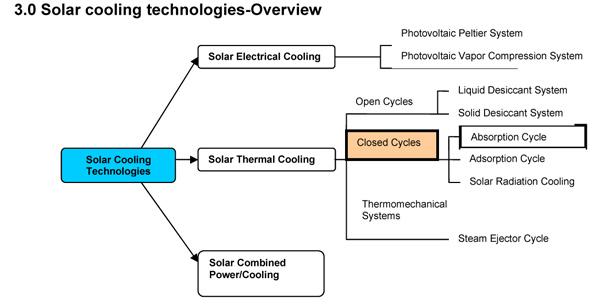
Due to the intermittent nature of solar energy, it is a better option to use a thermal storage tank to store the heat for later use. This serves two purposes: first, the problem faced by the intermittent nature of solar energy can be overcome and second, the stored heat can be utilised at night when sunlight is not available or during peak load time for load shifting.
Absorption chillers available in the market require the following heat sources:
Solar absorption air conditioning systems can be configured in many different ways. The situation becomes more interesting when multiple heat source streams are used in conjunction with solar heat. But the alternatives must be evaluated very carefully so that they meet the specific needs and requirements of a project.
We can categorise solar absorption air conditioning systems broadly into the following options:
Option 1: Utilising solar energy as the primary heat source and auxiliary heater as the secondary heat source (hot water/steam-operated chillers).
Option 2: Utilising solar energy as the primary heat source and fossil fuel and/or waste heat as the secondary heat source (multi-energy units).
Option 3: Utilising two different absorption machines – one working with the solar hot water and the other, directly fossil-fired during the sun depleting hours. (hot water + direct-fired)
Option 4: Onsite power with cogeneration
What the options entail:
Option 1
Utilising solar energy as the primary heat source and auxiliary heater as the secondary heat source
Hot water-operated chillers:
The diagram, on the opposite page, represents a schematic depiction for a single-stage hot water-operated chiller. The hot water obtained from the solar collectors is stored first in the hot water thermal storage tank. This can help overcome the problem of the intermittent nature of the sun. Moreover, the hot water can be used when the sun is not available – cloudy days or at night.
The other advantage of using hot water storage is to utilise big Delta T (temperature difference) of hot water, as hot water storage takes less volume to store the same amount of energy than chilled water storage. (See “diagram 2” at the end of this story)
The other possible arrangement is to use hot water directly into the absorption machine. The advantage of such an arrangement is that higher hot water temperatures can be utilised directly into the generators, thus increasing the machine efficiency.
However, this system is not flexible enough to suit the operation when sunlight is not available. This shortcoming can be overcome by adding a chilled water thermal energy storage tank. In this way, the chilled water can be provided during evenings and cloudy days. But, again, the volume of chilled water storage for the same amount of stored energy is higher than hot water storage. Hot water storage, therefore, is a preferred arrangement.
Steam-operated chillers:
In this case, concentrated solar power (CSP) collectors are used to produce high temperature molten salts, air or oil. These can be used to produce steam.
The triple-effect absorption chillers require 250°C steam at 40 bars and assure a COP of 1.8. The CSP collectors can be used to produce this quality of steam.
The heat from the solar collectors can be stored in molten salt storage tanks that can be used during the non-sun hours. The concept is more suitable for power production, as it requires a large setup and big investments.
Option 2
Utilising solar energy as the primary heat source and fossil fuel and/or waste exhaust heat as the secondary heat source (multi-energy units)
In this case, the low temperature hot water (98°C) obtained from evacuated tube solar collectors can be used in low-temperature generators of double effect multi-energy type units, whereas, the fossil fuel or waste exhaust heat (500°C) can be used as the heat source for high-temperature generators. These types of units are more suitable for applications where a continuous supply of waste exhaust heat is assured.
Also, hot water storage would be required for solar-depleted hours to provide hot water for low-temperature generators.
The multi-energy type unit utilises standard proportions for fuel, like:
However, the fuel proportions can be altered with custom-made units, meeting project requirements.
These can be:
(See “diagram 3” at the end of this story)
Option 3
Utilising two different absorption machines – one working with the solar hot water and the other, direct fossil fuel-fired for the sun-depleting hours. (hot water + direct fired)
This system is most suitable in case of 100% redundancy requirements. The hot water-operated chiller can be used during those hours of the day when the sun is available and the direct-fired chiller can be used during the sun-depleting hours.
The hot water-operated chiller can be a single-stage one, which can be provided with hot water from low-cost evacuated tube collectors.
Double-effect hot water operated chillers require hot water temperatures of 180°C. This is possible only with concentrating collectors.
An economical solution would be to use the single-stage hot water chiller with the double-effect direct-fired chiller. This assures good overall COP.
Option 4
Onsite power with cogeneration
Concentrated solar power (CSP) collectors are mainly used for power generation. These produce high temperatures of molten salts, air or oils. This, in turn, produces steam to run a steam turbine.
The condenser water of the steam turbine can be used to run an absorption chiller, and thus be assured of a cogeneration- chilled water system. (See “diagram 4” at the end of this story)
The auxiliary components and subsystems for solar-powered absorption air conditioning systems are:
Conclusion:

Intermittent supply of solar energy is the main challenge posed by solar cooling systems. But this can be overcome by energy-storage devices and financial incentives, respectively. Well-designed chilled water systems have the potential to save primary energy (40-60%). But higher first cost, that is, 2 to 2.5 times more than conventional electric chillers is another challenge. This can be obviated by:
In general, small capacity systems are required to penetrate the technology at all levels. Also, there is a need for an advanced operation and control system.
There are other barriers that might hinder the growth of the solar cooling system market. They are:
(Ref: European Solar Thermal Industry Federation)
Technical barriers – hardware
Technical barriers – teething trouble
Lack of awareness
There is lack of awareness about solar cooling systems as the concept is just emerging and the technology is still evolving. As solar cooling systems become more standardised, the lack of awareness among consumers and professionals will become a key barrier to growth.
Cost
The following challenges need to be addressed when working out the cost-effectiveness of the system:
Now, that the other aspects of the concept of solar cooling systems have been analysed, it is time to look at the financial fine print.
Privately owned buildings require a payback period of two to three years. Five to seven years is sometimes acceptable, but if it is over 10 years, it is economically not attractive.
The case is different for publicly owned buildings such as schools and government offices, where an extended payback period might be justified.
Solar air conditioning system can be a cost-effective solution compared to traditional vapour compression systems in following cases:
In conclusion, one can say that with electricity and natural gas becoming increasingly more expensive, the concept of solar cooling will become a more economically attractive option, as it can result in less peak load on grids. But the fact remains that it requires financial support schemes at the national level in order to overcome the initial cost barrier, improving market penetration and exploiting the economies of scale.
Financing can come from multiple sources, including upfront equity, debt financing, incentive schemes, including subsidies, low-interest rate loans, grants and tax incentives. It is interesting to note that despite it being economically not a very attractive option, we have seen 100 new solar cooling projects in 2009. This is, indeed, an encouraging figure.

The writer is Senior Mechanical Engineer, ADC Energy Systems, Dubai, UAE. He can be contacted at: mali@ADCEnergySystems.com
OVERVIEW OF WORLDWIDE INSTALLED SOLAR COOLING SYSTEMSThe International Energy Association (IEA) carries out a programme to promote the concept of solar heating and cooling. SHC (Solar Heating and Cooling) is another similar programme. Under this, TASK 38 was initiated to promote solar cooling systems. The team entrusted with the task studied the number of solar thermal installations all over the world in the year 2007 and compiled a list of projects with cooling capacity greater than 20 kW. The list mentions 81 solar cooling systems with the following distribution pattern: 73 installations are in Europe, seven in Asia, particularly in China, and one in the United States. Out of the 81 installations, 56 installations are absorption chillers, 10 are adsorption chillers and 15 installations are desiccant evaporative cooling systems. The overall cooling capacity of solar energy-driven cooling systems amounts 9MW, out of which, 31% is installed in Spain, 18% is installed in Germany, and 12% is installed in Greece.
|
| REFERENCES
1. Mittal, V, Kasana, KS, Thakur, NS, 2005. The study of Solar Absorption Air-Conditioning Systems, Journal of Energy in Southern Africa, Vol 16 No 4, pp59-66 2. Sparber, W, Napolitano, A, Melograno, P 2007. Overview On Worldwide Installed Solar Cooling Systems, Second International Conference Solar Air Conditioning, Tarragona, Spain. 3. Burns, Steven S, Goggin, Michael S, Hinrichs, Douglas W, Lee, Kenneth K, Year unknown. Technical And Economical Assessment Of Solar Thermal Absorption Cooling Systems In Small Commercial Buildings, Sentech, Inc 4. Duffie, JA, Beckman, WA, 1980. Solar Engineering of Thermal Processes, John Wiley & Sons, New York. 5. Kalogirou, Soteris A, 2009. Solar Energy Engineering Processes and Systems, Academic Press, USA. 6. ASHRAE 2007. ASHRAE Handbook, Applications. Atlanta: American Society of Heating, refrigerating and Air-Conditioning Engineers, Inc 7. ASHRAE 2008. ASHRAE Handbook, Systems and Equipment Handbook. Atlanta: American Society of Heating, refrigerating and Air-Conditioning Engineers, Inc. 8. Martin, CL, Goswami, DY, 2005. Solar Energy Pocket Reference, International Solar Energy Society, Earthscan, UK Internet sources of data 1. Broad Green Central Air Conditioning Catalog BY 130-06, http://www.broad.com 2. Solar Resource Data World radiation data center (WRDC) online archive, Russian Federal Service for Hydrometeorology and Environmental Monitoring; 1964-1993 data http://wrdc-mgo.nrel.gov 1994-present data http://wrdc.mgo.rssi.ru/ 3. Surface meteorology and solar energy, National Aeronautics and Space Administration, USA; http://eosweb.larc.nasa.gov/sse 4. Solar radiation resource information, National Renewable Energy Laboratory, USA; http://rredc.nrel.gov/solar Climatic Data: 1. World climatic data, World Weather Information Services; http://www.worldweather.org 2. US climatic data, National Oceanic and Atmospheric Administration, USA; http://www.noaa.gov/climate.html |
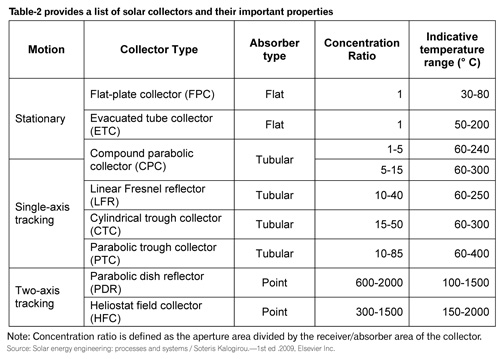
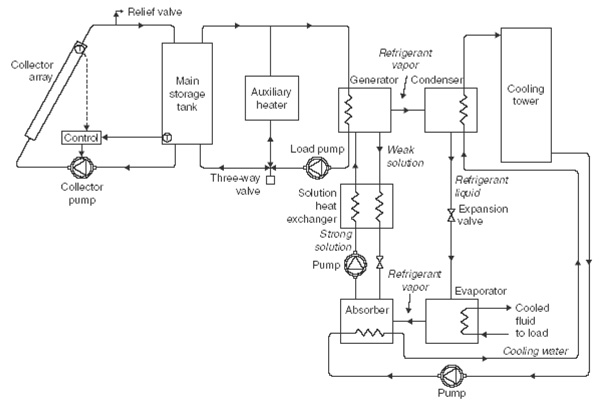
Diagram 2
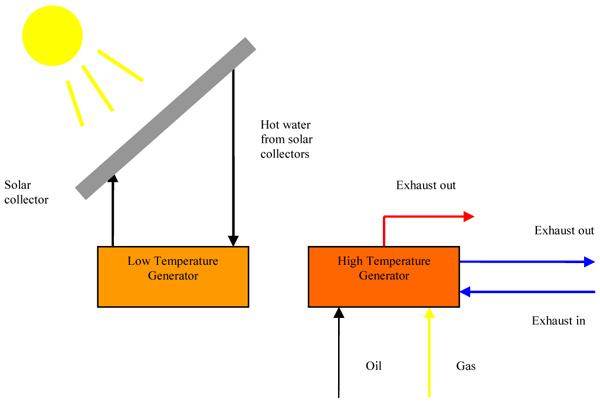
Diagram 3

Diagram 4
Copyright © 2006-2025 - CPI Industry. All rights reserved.